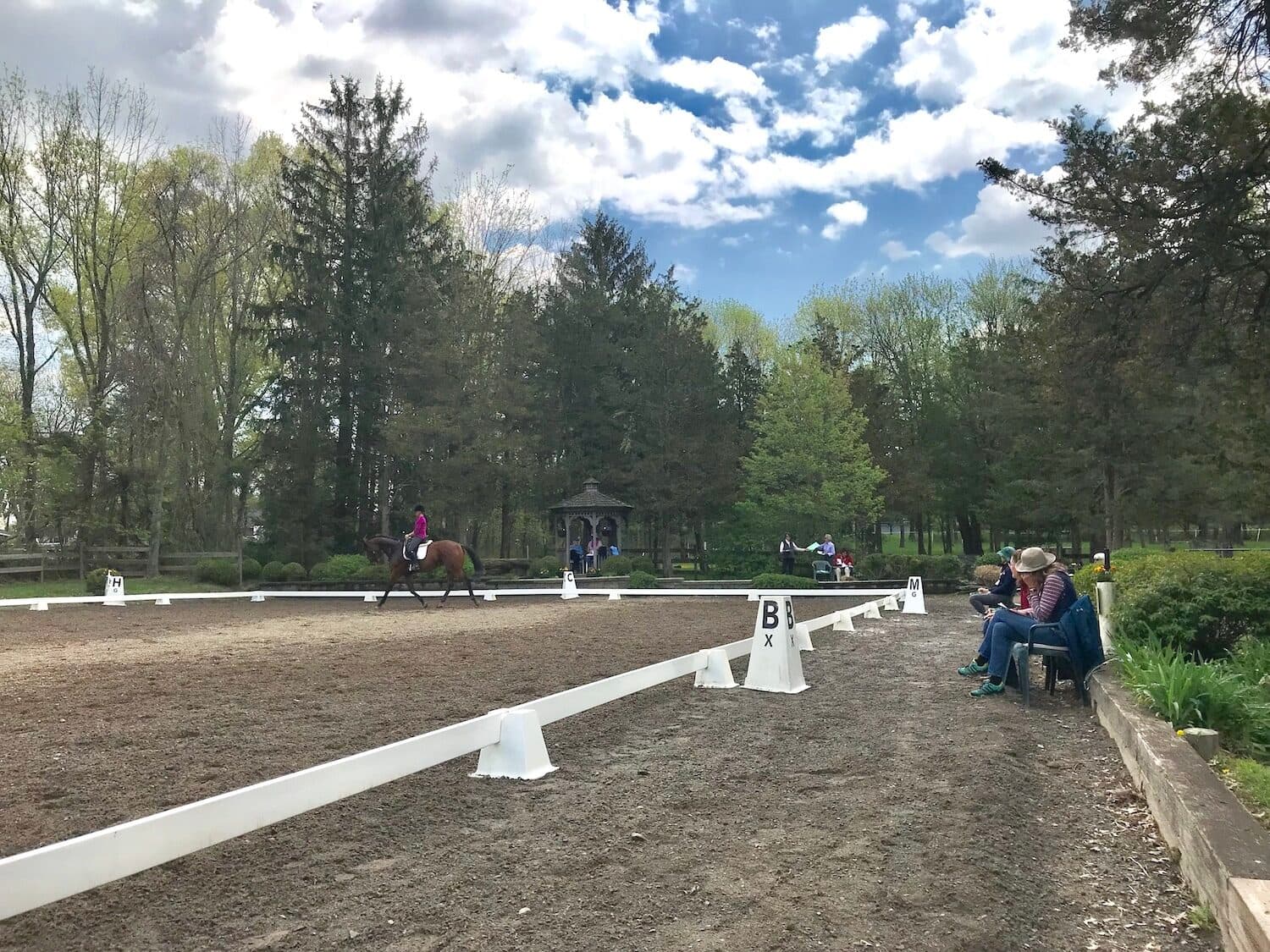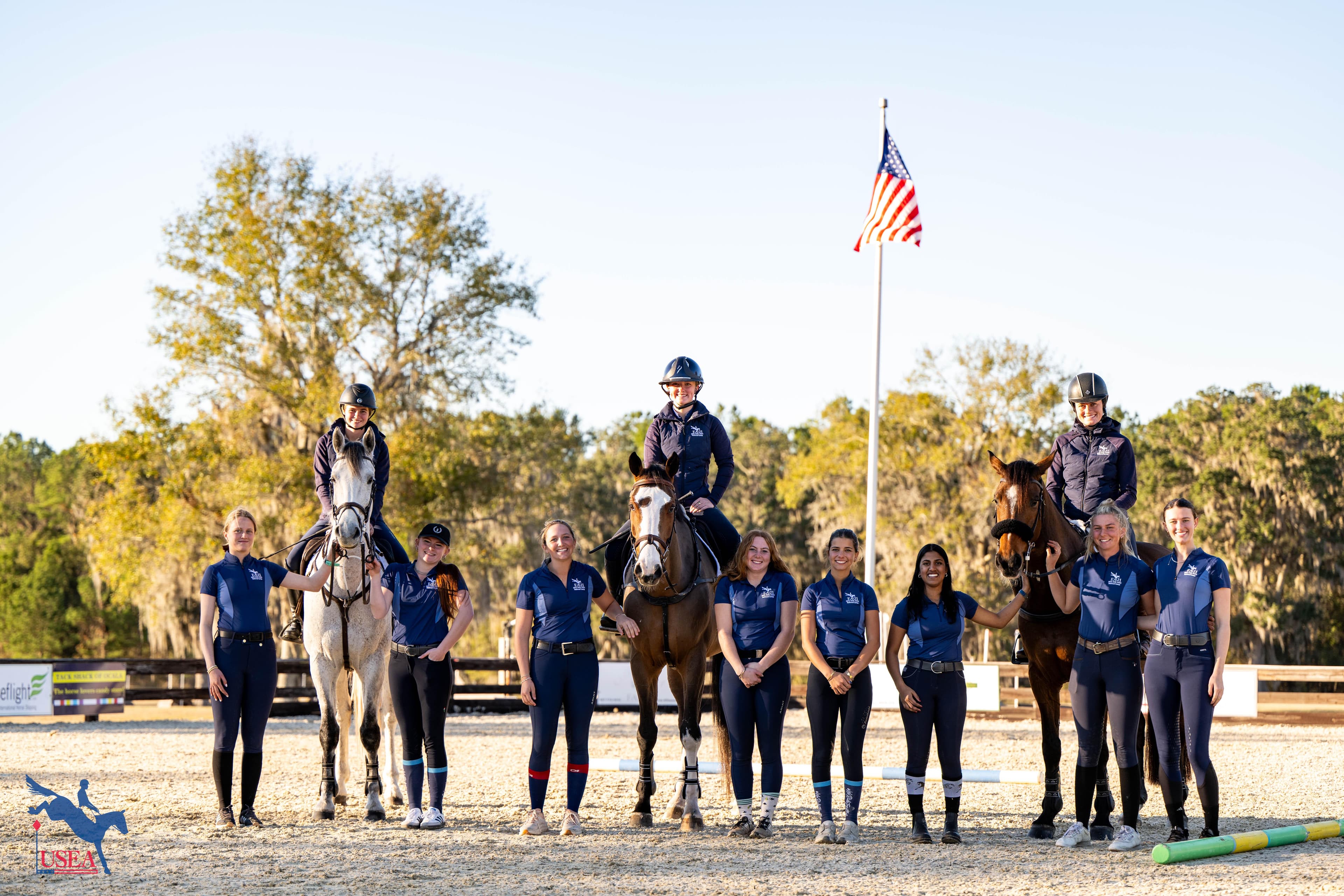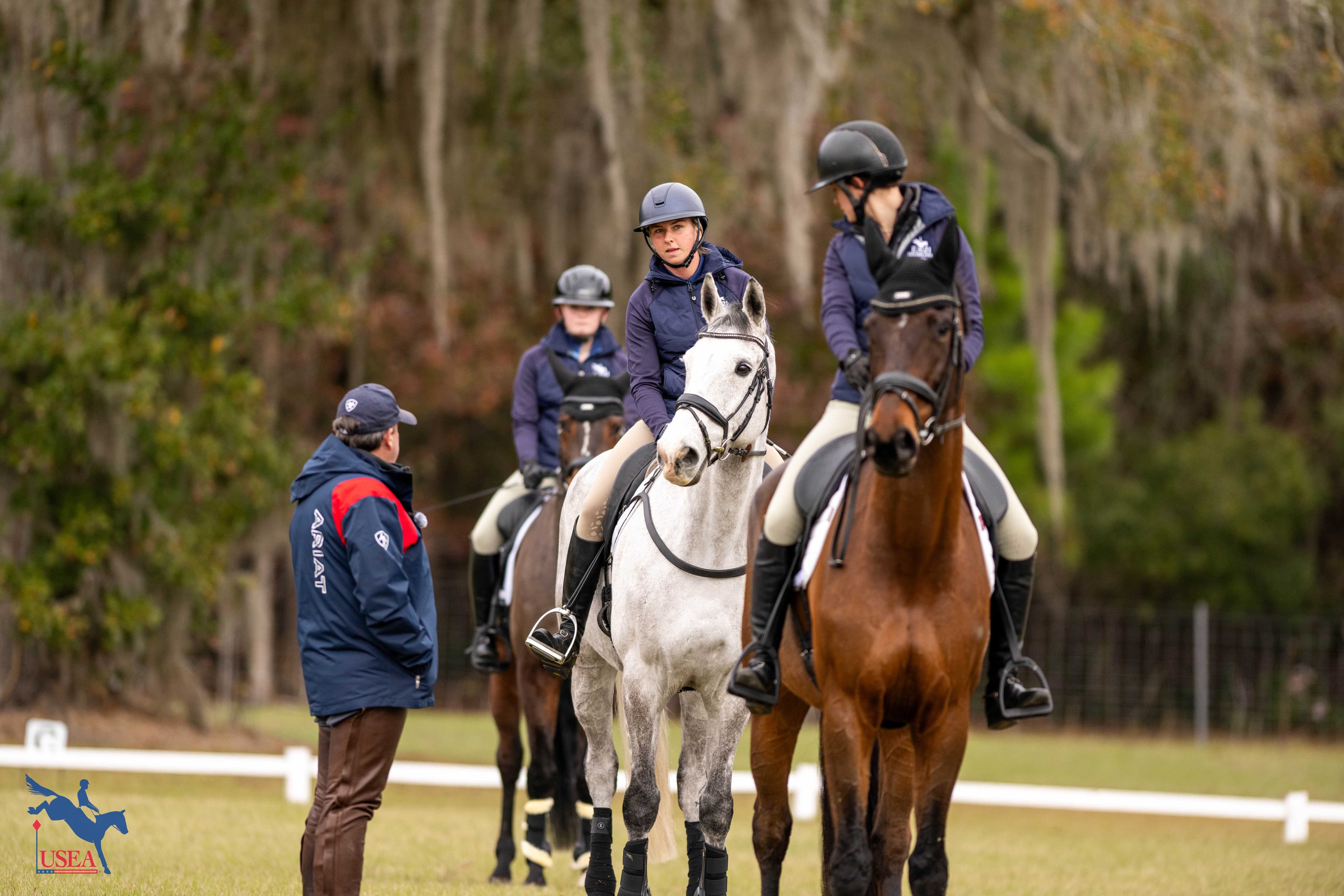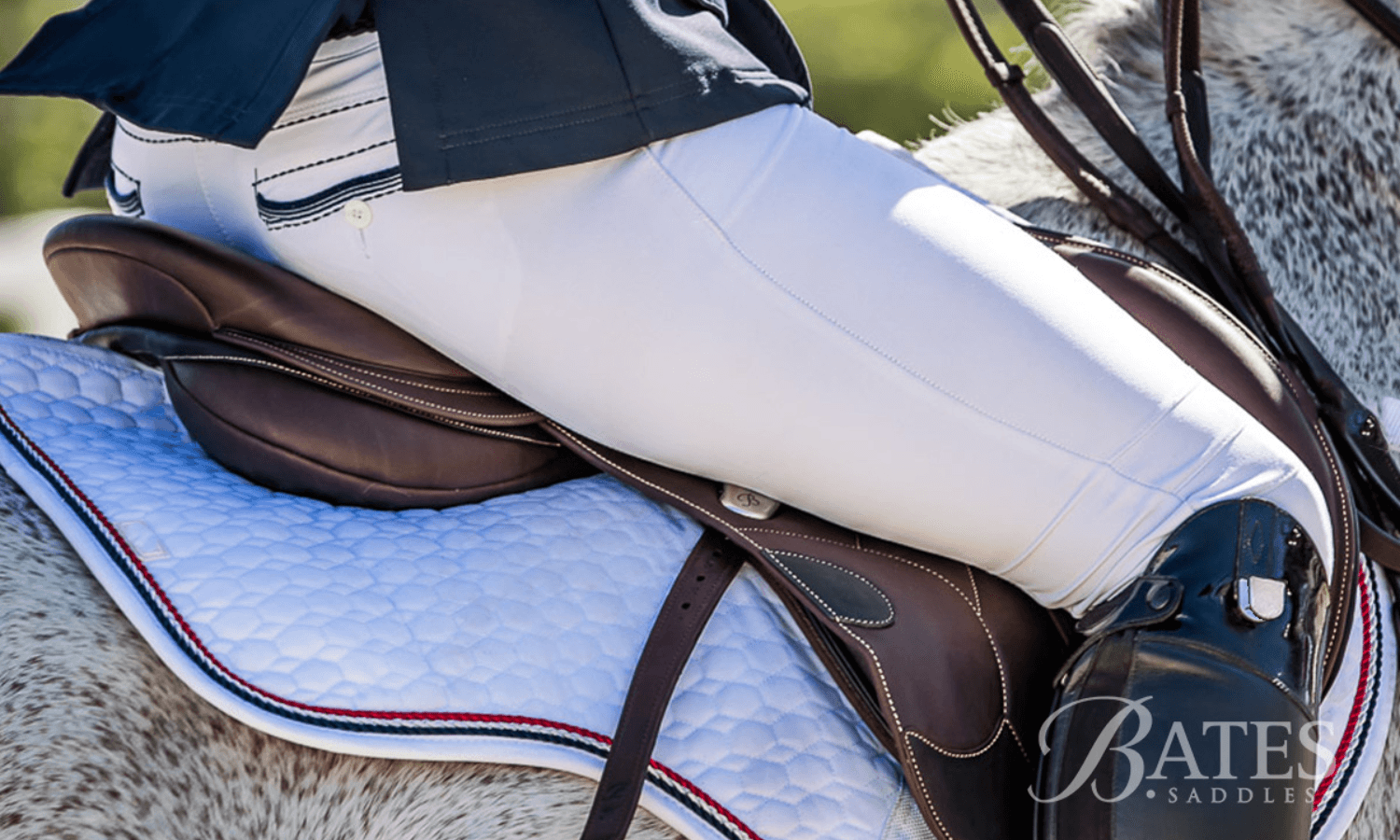So You Want to Be a Judge, Part III: Dressage as Laser Focus

Abby Gibbon is on a journey to obtain her USEF “r” Eventing Judge's license and is taking us along with her through the Training Program for Eventing Officials. Click to catch up on Part I and Part II.
That’s how it goes when you set a new goal, especially when horses are involved: it’s so far off, you’ll have plenty of time, and nothing could ever go wrong. Wasn’t it only a few days ago that our cohort started this journey January in Ocala, Fla., and then somehow all of the sudden here we are at our latest and final ”r” training session at Marilyn Payne’s beautiful Applewood Farm in Califon, N.J., May 7-8, going into deep focus on dressage? Shouldn’t we all be experts by now?
One of the things I’ve come to discover about judging is that it’s like any other scholarly pursuit. To be any good at it, you have to commit to the idea that it’s a continual learning process that’ll require ongoing discussion and work, even after you’ve become a licensed official. The rulebooks are always updating and changing, after all. And this session, under the guidance of Marilyn Payne and Cindy DePorter, we got to witness the ways both women are continually engaging with their methodologies. Because even when you’re a top judge, you can’t rest on your laurels. Besides, if you’re going to spend two days in the presence of Marilyn and Cindy and not instantly declare yourself a failure, you have to believe they started somewhere, maybe not quite down on your level, but beneath the stratosphere, maybe.

For two days we watched and scored riders at the Novice, Training, and Preliminary levels, testing our scores and observations against Mariyln’s and Cindy’s. You gain a real appreciation for the speed of tests (and for the saintly generosity of scribes) when you try to observe, score, and comment on a test all by yourself. Of course we’re all human, but to accurately score a test one has to maintain a laser level of focus, since, as we know, horses change their minds in an instant. And on a given competition day, that laser focus might have to endure for a solid eight hours with minimal breaks. This level of exactitude was obvious in both Marilyn and Cindy’s abilities to score, comment, observe, teach our session, and shepherd riders into and out of the rings without missing a beat. Meanwhile, I was lucky if I didn’t miss a few movements per test while scribbling down a one-word comment.
And commentary was a major focus of our session. As anyone who has scribed a test knows, judges are narrating and describing each movement before reaching their score, and these descriptions are ultimately what lead to a specific number. It’s therefore important that judges develop and refine a vocabulary to describe certain types of movements, deficiencies, or disobediences, since the scoring scale itself involves not only a rubric but also a vocabulary for all scores from 0-10. On the official dressage rubric, an “8” is classified as “Good,” so a movement should only be described in the comments as “good” if it would equate to that score. This can be helpful in the sense that if you’re watching a test and thinking good, that movement may likely be an 8. But this is also where experience and confidence come into play, since “good” is a common adjective, and it could lead to a new judge giving either a generous score or a generous comment in conjunction with low score. We’ve all received tests where the scores and comments didn’t totally align (or when there were less than helpful or clear comments), and we know how that feels.

It follows that it’s important for judges to develop a more varied and exacting lexicon seeking to describe what actually happened (“counterbent,” “needs more ground cover,” “supple over topline,” etc.) and help the rider to understand the score and formulate a training plan for the next competition. Time and again as we watched tests and shared comments, both Marilyn and Cindy dipped into seemingly endless mental thesauruses, rattling off multiple, specific descriptors for every type of movement. Of course, they’ve had years and years of experience and practice watching tests and conferring with other top officials. But it was also obvious that both women had spent a lot of time thinking of metaphorical ways to describe movements outside of the dressage arena. Medium gaits, Marilyn said, “should appear as though the horse is moving through water.” “Forward,” Cindy said, “can help cover a multitude of sin.”
Their devoted study of the scale was truly impressive and inspiring, and drove home the amount of time and practice it will take to not only develop that vocabulary but also train the recall to the movement and score, so that the right words come to mind as the movement occurs and the scribe still has the time to write them in the box.
After all, a dressage test might be the only thing a rider takes home at the end of an event, and I’ve had many days when the score wasn’t quite what I wanted, but the commentary proved a silver lining. That’s the type of judge I strive to be, but it’s going to take devotion.

Leaving our final training session, I’ve never felt more sure that this license isn’t going to be easy. Between now and our testing in August, there’s a ton of apprentice judging, independent studying, observing, and work ahead. All of which, as we know with life with horses, will depend on a lot of things falling into place. Regardless of what happens, the education I’ve received and the time I’ve been lucky to spend with so many top officials has already been such an inspiration and I can start to see the many ways it’s going to enliven my own riding and teaching.
So here’s to a summer of hard work with horse sports. What’s new, what could be better?
Abby Gibbon is the owner, trainer, and manager of Fine Idea Farm in Mt. Airy, Md. She is currently pursuing her “r” Eventing Judge license and looks forward to writing about the process throughout the year. Stay tuned for more!














